|
|
The end of Loftus High Street looking towards the Market Place, about 1920. The shops were: a small general dealers, Mr Robinson’s bike and electrical shop, then came Finlay’s sweet shop. Can we date it by the pram? The gap in the wall on the right hand side was for a horse trough that was fed by a natural spring. Eric Johnson says ”The first shop has the name S. Jackson on the sign. Kelly’s Directory of the North Riding for 1905, lists: ’Jackson, Sarah (Mrs), shopkeeper, 43 High Street Loftus”. Jean Wiggins tells us od this image: “Granny Jackson is standing outside Jackson’s grocer’s on the corner of Dam Street. The middle shop is ‘Sappy’ Watson’s barbers and the next is Finlay’s provisions.”
Many thanks to Jean Wiggins for the update.
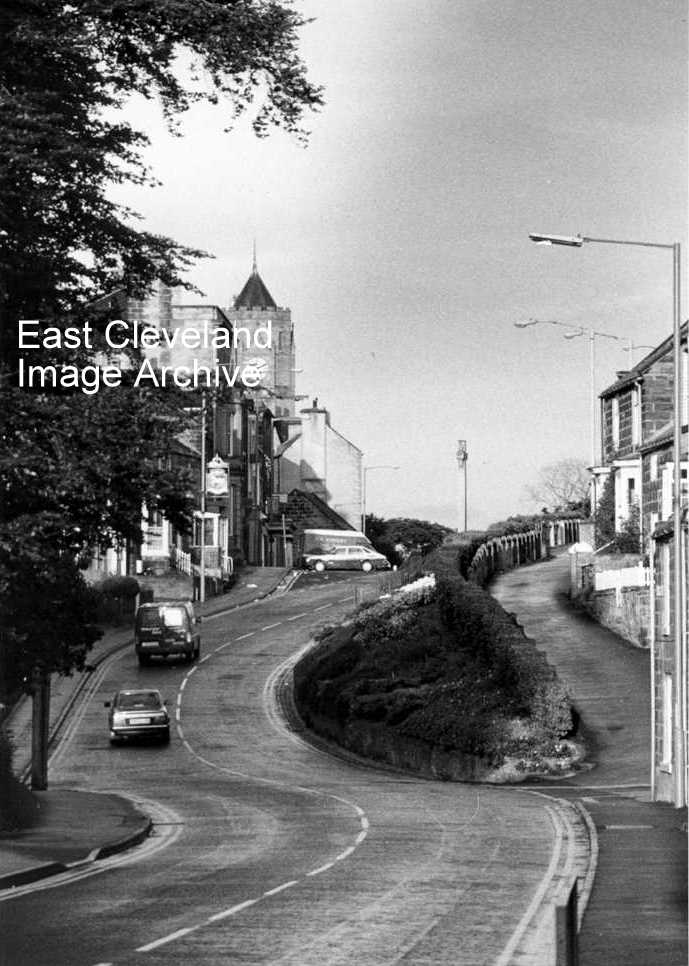
A busy day in Loftus as the two vehicles go towards the Market Place? Known to be dating from 1986 as Martin Richardson advised the Archive: “I can remember the Saab parking in the Market Place at that time!”
Thanks to Martyn Richardson for that update and dating of the image.
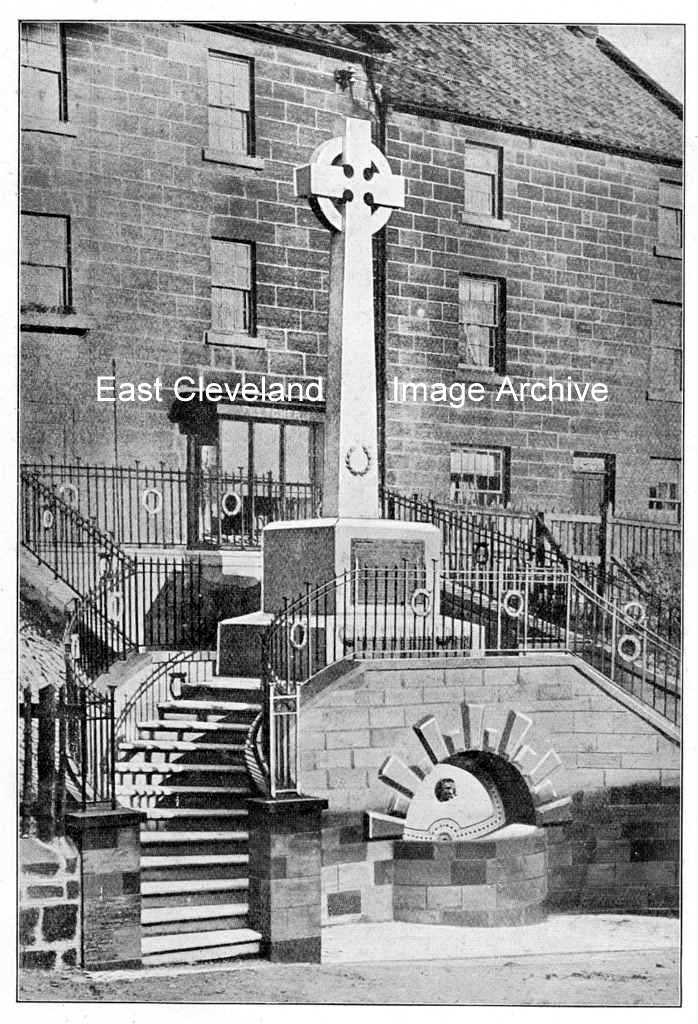
This image was taken from the Order of Service produced for the dedication ceremony of Loftus War Memorial. The War Memorial was unveiled at 2.00pm on 11th November 1922, (one year after the end of registration of deaths due to the War or its effects; it was designed by B. J. Wormleighton and erected by Charles Hebditch (Loftus building company). Built of Cornish granite, it is a Celtic cross and stands on land donated by Lord Zetland.
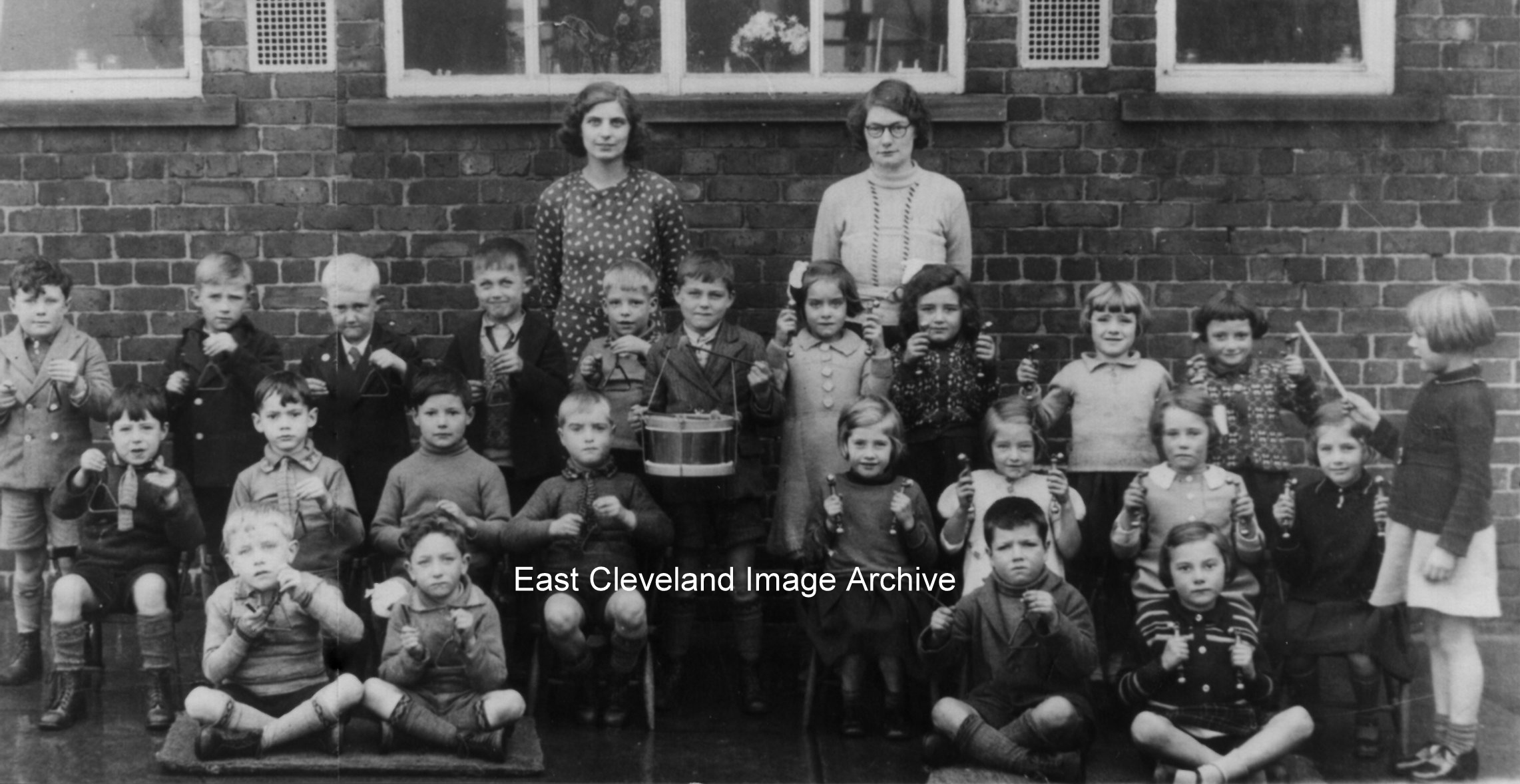
Although even the date on this photograph was questionable and was thought to possibly date from the 1930s, the two teachers can be identified as: Miss Ethel Adamson (later to be Mrs Bassindale) and Miss Pat Stanlake (later to be Mrs Fletcher). But many of the pupils named remain a mystery, so the Archive asked for help.
Derick Pearson tells: ”First pupil on the left middle row with the triangle was Charlie Hellings (junior); fourth from on left back row Walter ‘Taxi’ Goldby”. Jeanne Whitfield added: ”Back row, second from right ( white sweater/ hair bangs) is myself; Jean Dixon. To my left in the picture, by the teacher is a girl called Cynthia who lived on Queen Street. Sadly, she died of diphtheria shortly after this photograph was taken. Fourth from the right, middle row is Jennie Webster. Girl seated next to the girl standing with the baton is Margaret Dye. Girl sitting with her legs crossed is Mary Young. I’m not sure, but I think the girl above Mary Young is Mary Laverick, (now Fenby) and living in Australia. Also I think the girl next to the drummer is Betty Poritt. I was eight years old so the picture would be dated 1939. I hope this helps.”
Thanks to Derick Pearson for names and Jean Whitfield (nee Dixon) for names and probable dating of the image; also thanks to Eileen Clements for Miss Adamson’s correct name.
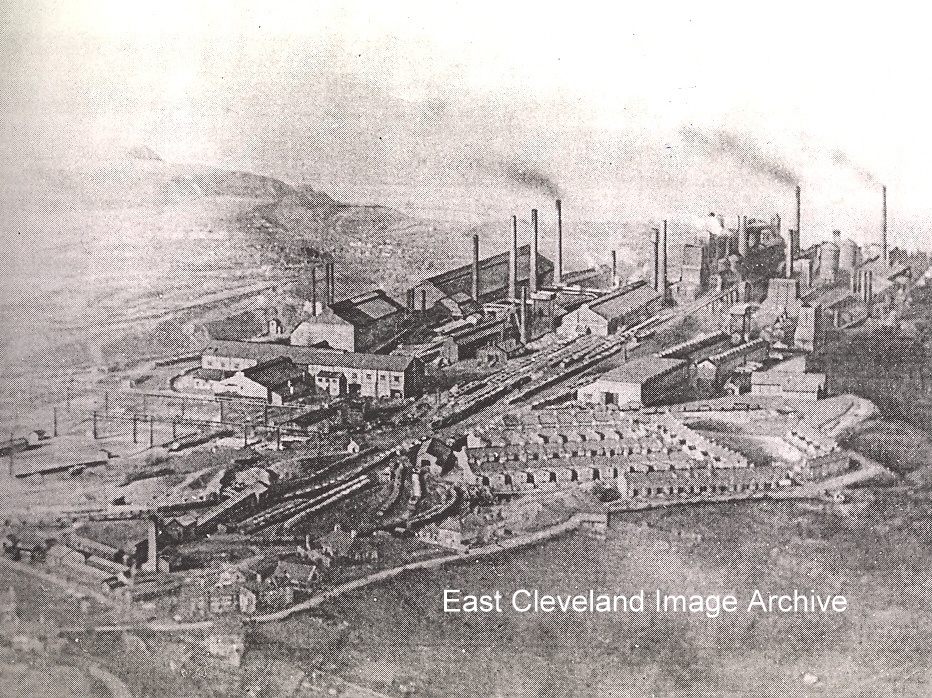
Here is an early aerial view of the works – dating from 1920 – more smoke in this image than in the others! Also of interest in this image, the buildings in the lower left of the view are of North Loftus mine.
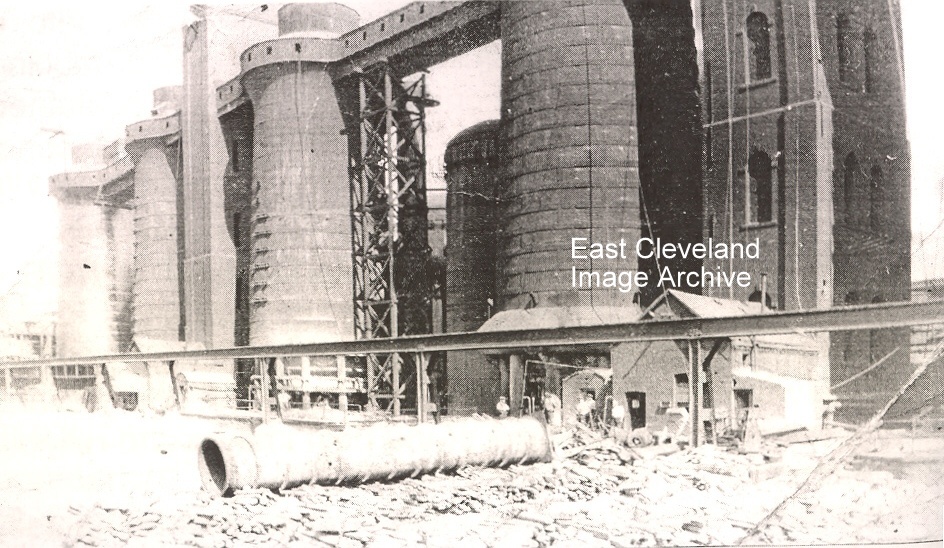
Not the shot of the blast furnaces that we usually see, but this shows more of the heaps of pig iron awaiting disposal; not sure what the large pipe section is though!
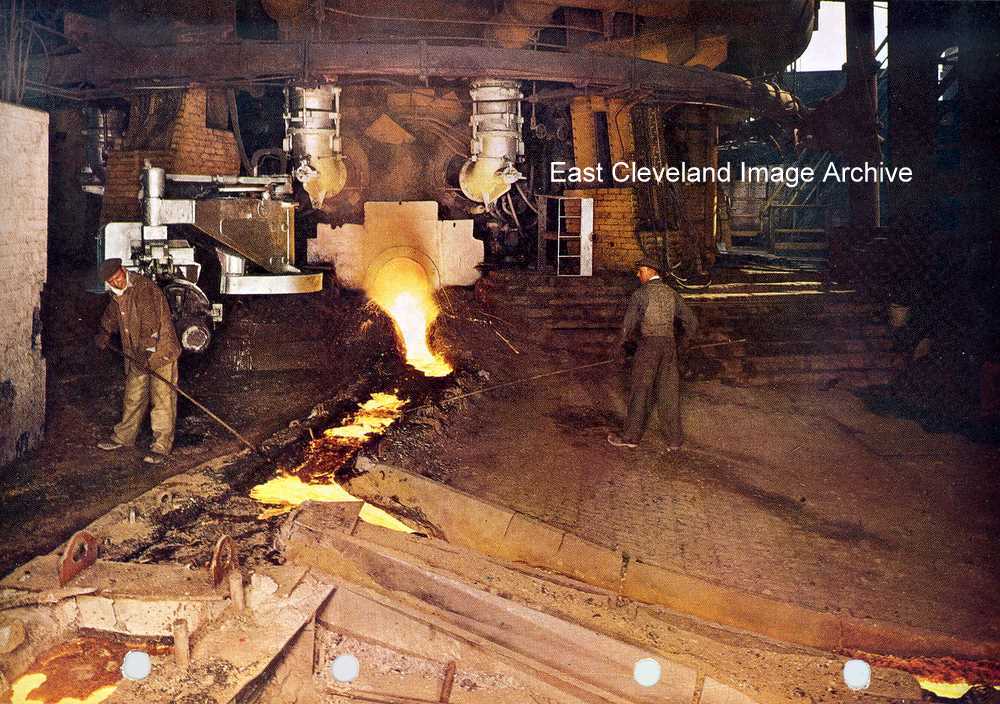
A modern view of a no. 5 casting; Bob Proctor tells us: ”If you ever wanted to view the inside of the furnace then you would use the eye piece, this is at the bottom of the silver goose-necks and looks like a protrusion. You would firstly make sure there was no leaking hot blast (500C) by moving your hand over the toughened glass eye-piece and then you could see through the blow pipe and tuyere into the heart of the furnace where the droplets of slag/iron cascaded down through the incandescent coke.” All working furnace-side wore blue glasses, otherwise their eyes would feel the pain! If possible using a sweat-rag, not their hand – 500C is not good for the skin! – but well-worth taking the precautions, it is a beautiful sight. The glass eye-piece (mica initially, then toughened quartz glass is called a pee-pee.
Thanks to Bob Proctor for the comment.
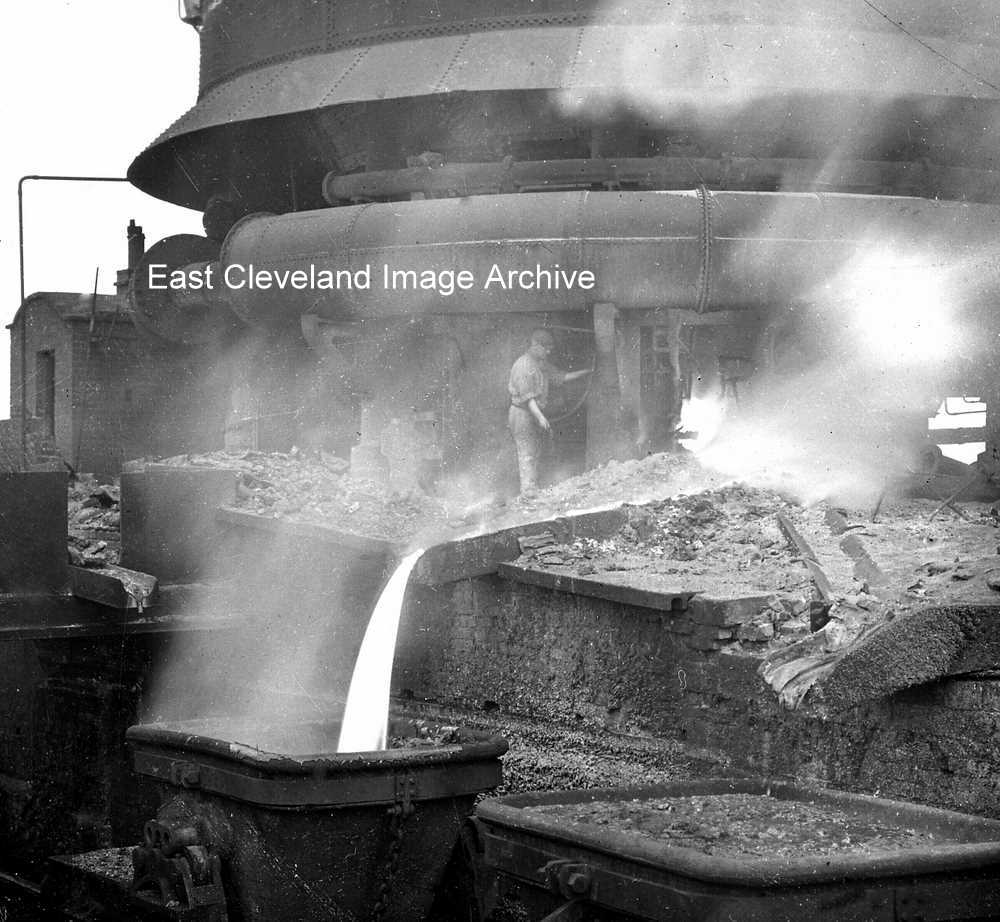
Here’s a slag pot being filled after the iron has been run off, does this brings back many memories?
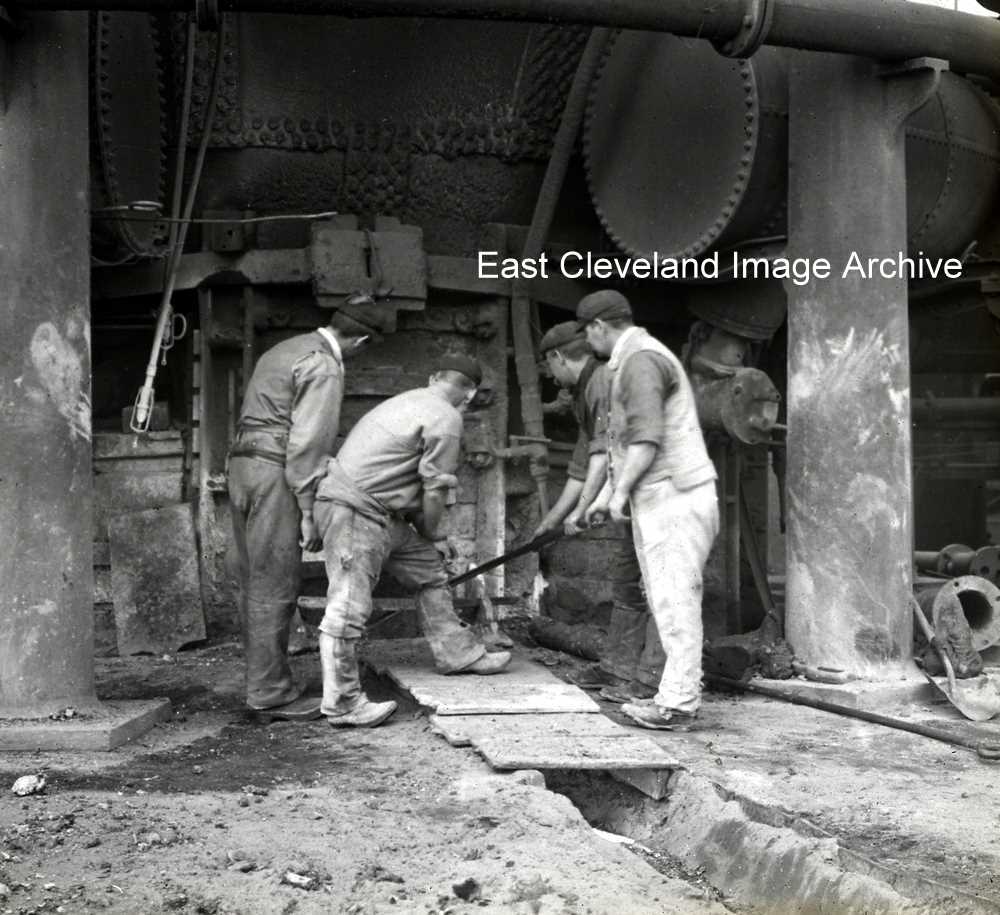
This is one of the older furnaces at Skinningrove with the crew barring out the tap hole; possibly ”Slaggers and Pig Bed Crew” in Skinningrove works. This must be quite an early photograph as none of the men are wearing a safety helmet. Middle man front row has his feet in ”Sow” channel for the molten iron.
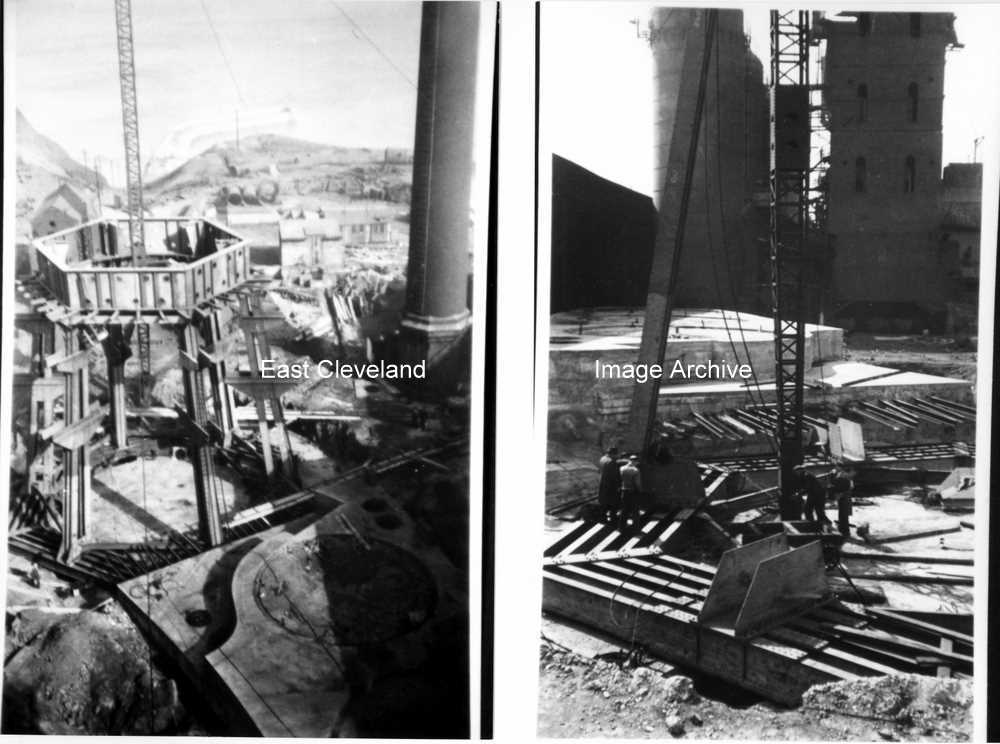
This shows the steel-work being erected that will eventually contain the structure of No. 5 Blast Furnace. In the left hand image, the shape at the bottom right is the hearth structure. This feature was the hardest part of the furnace to remove after it was toppled, being constructed of solid carbon blocks.
|
|
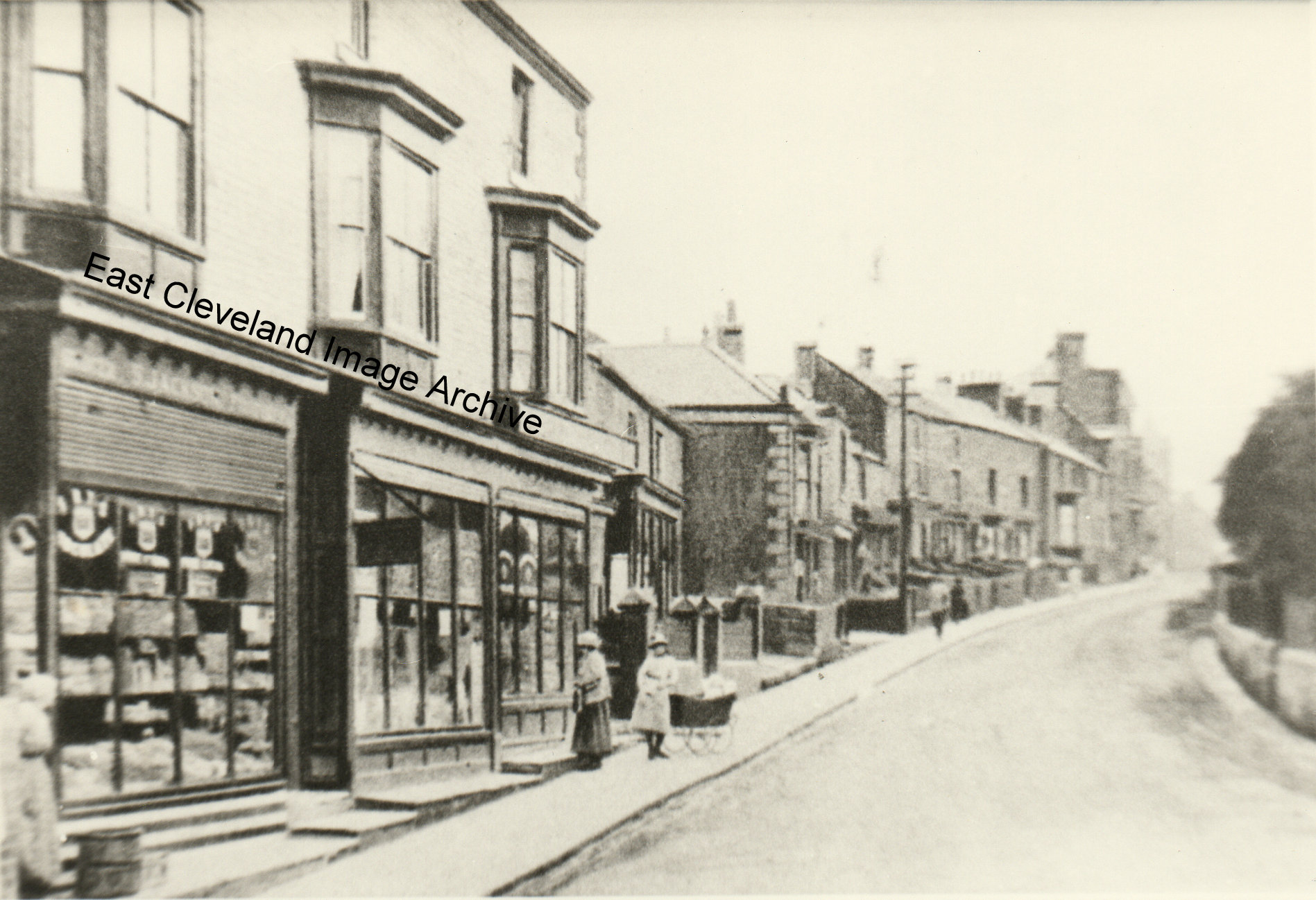









Recent Comments